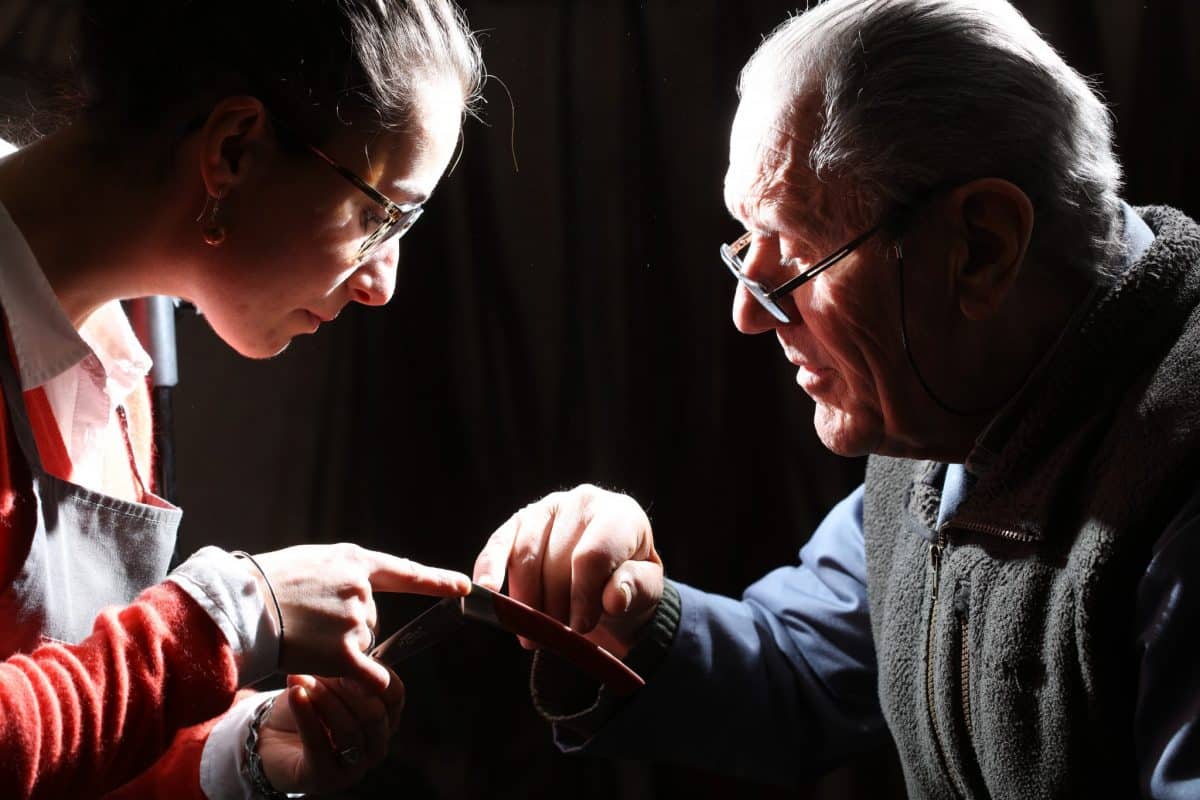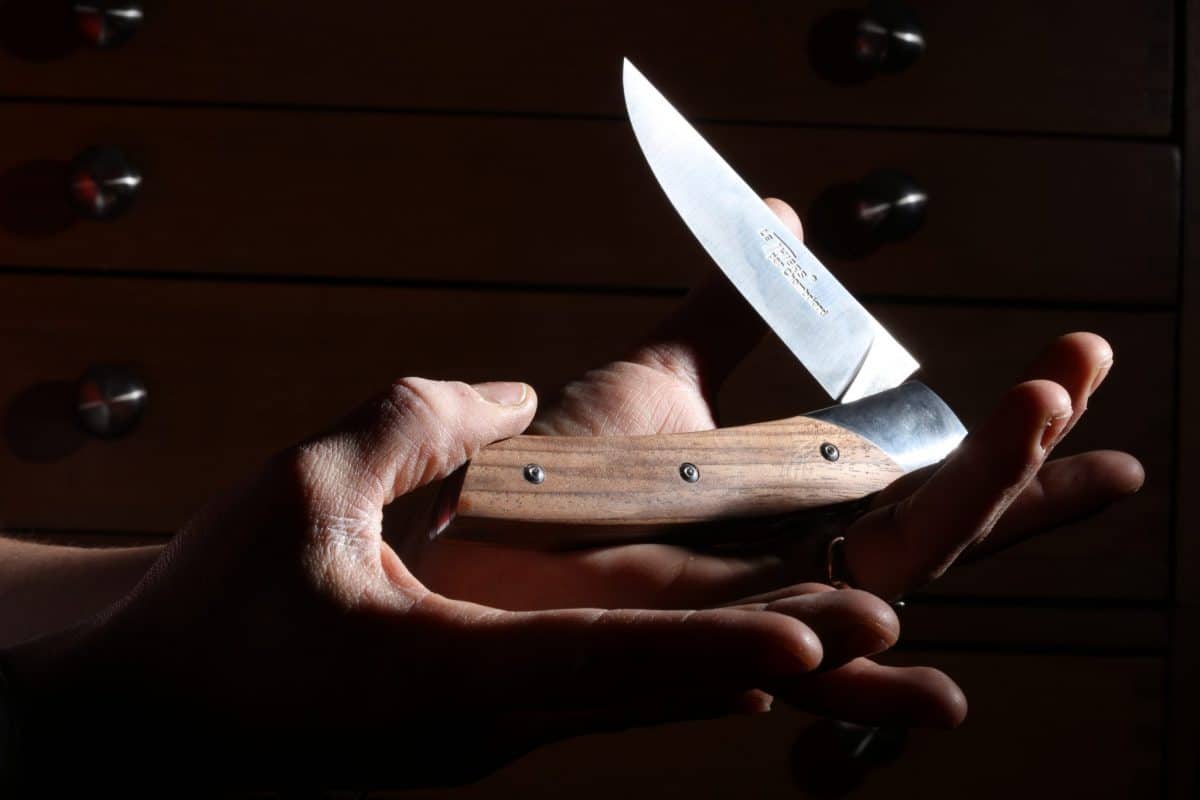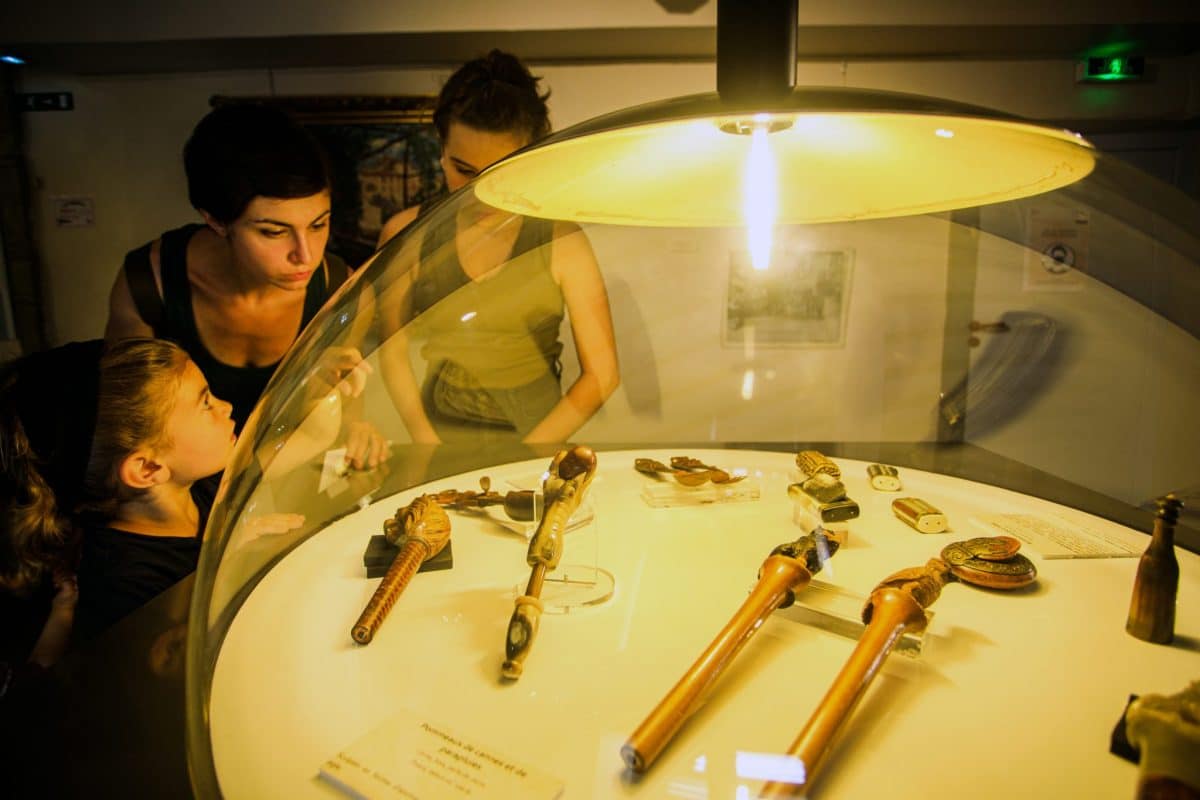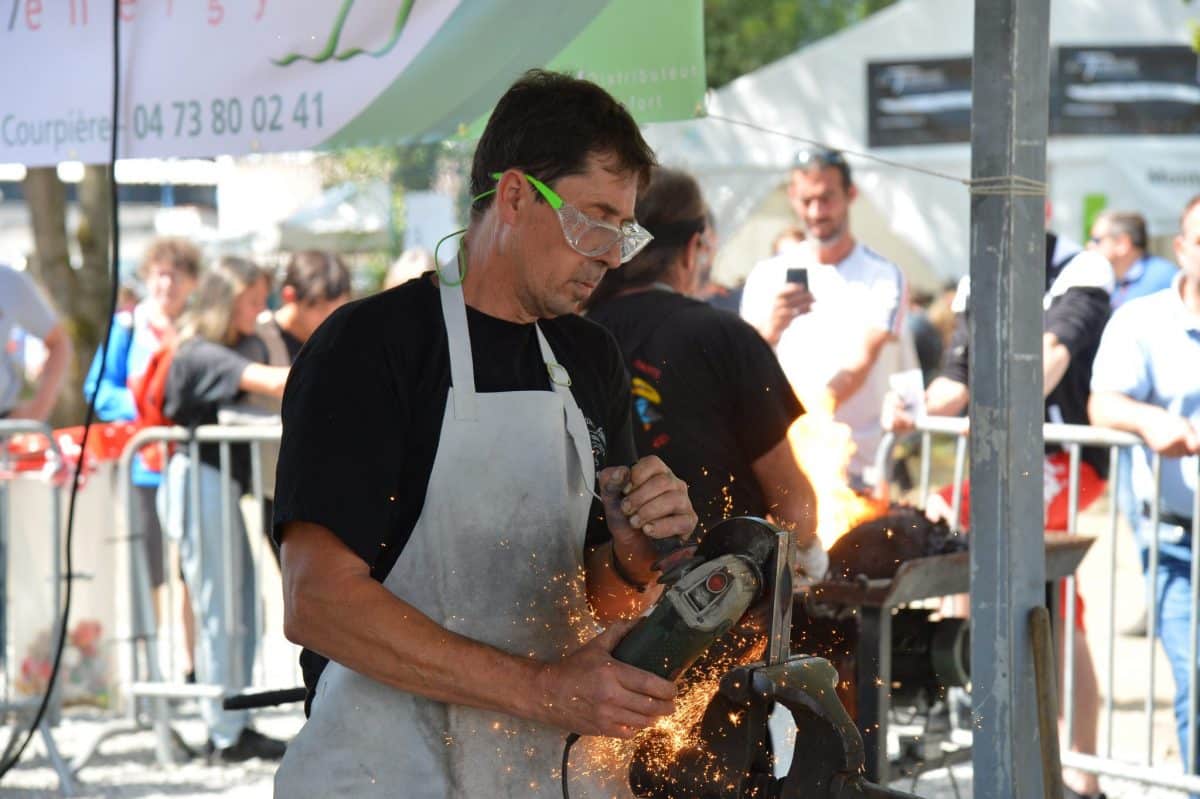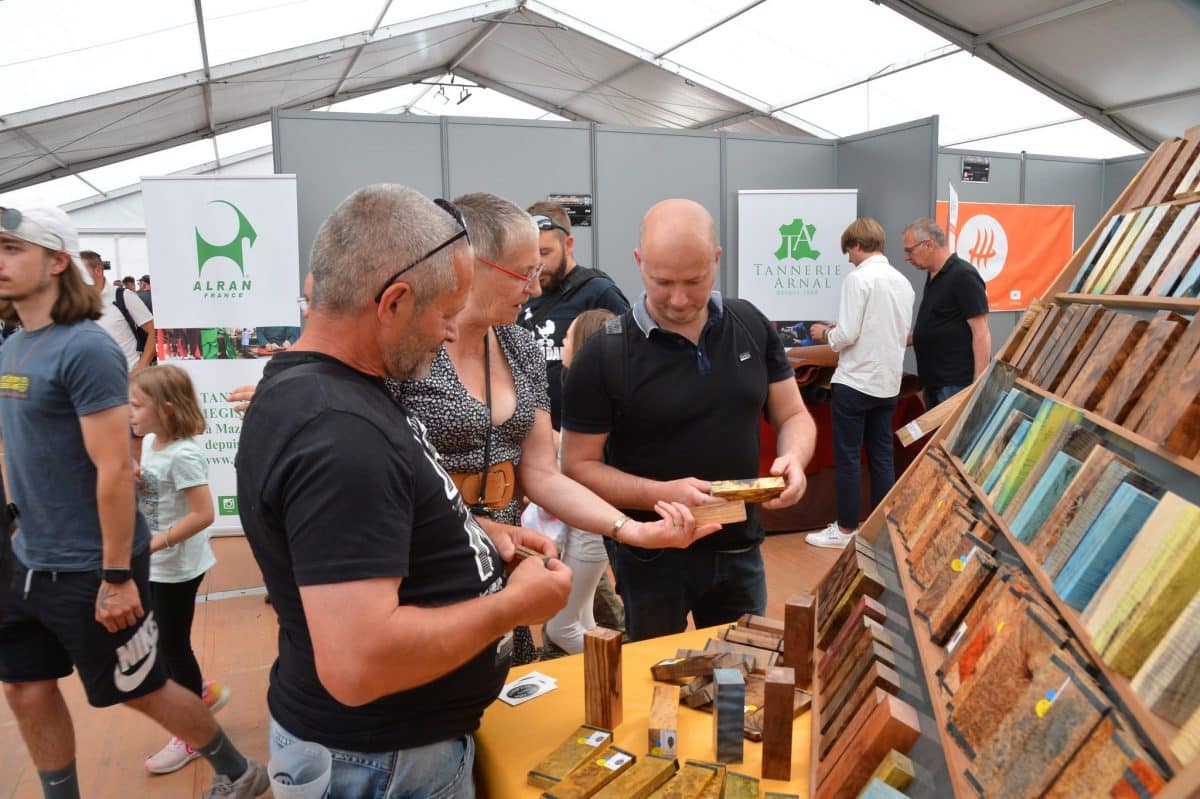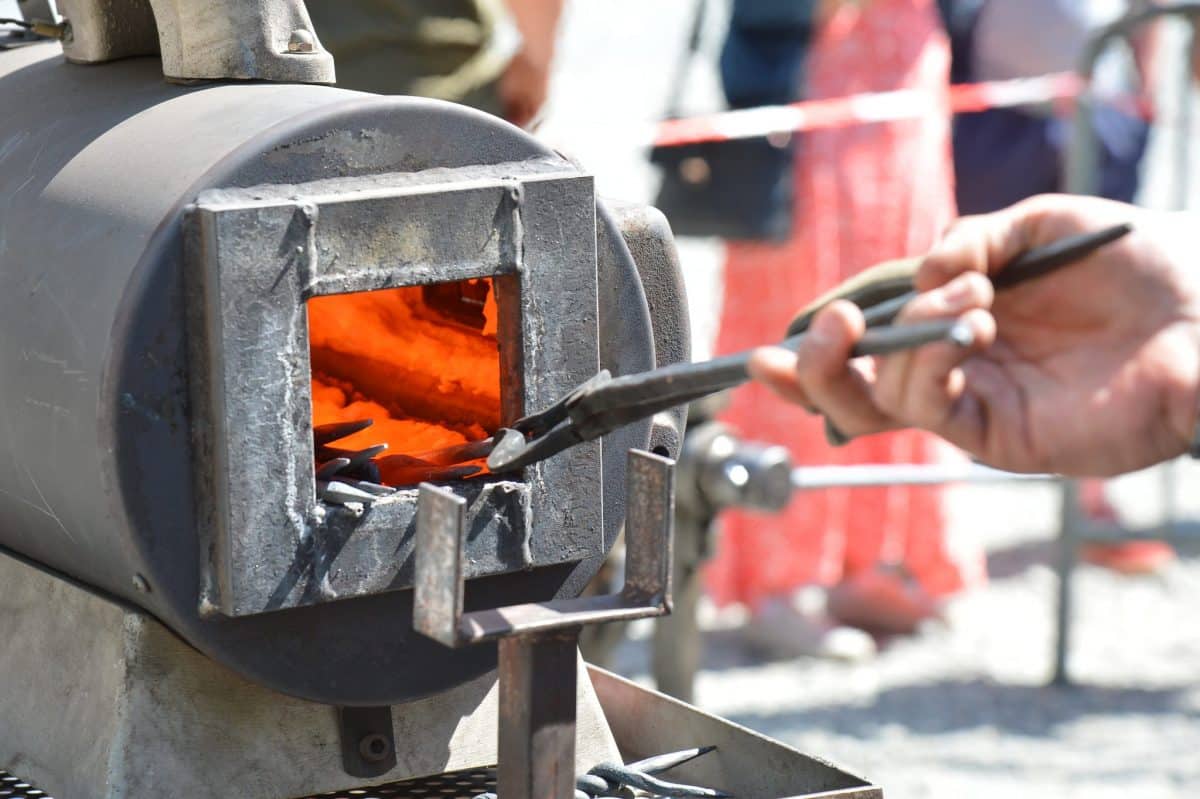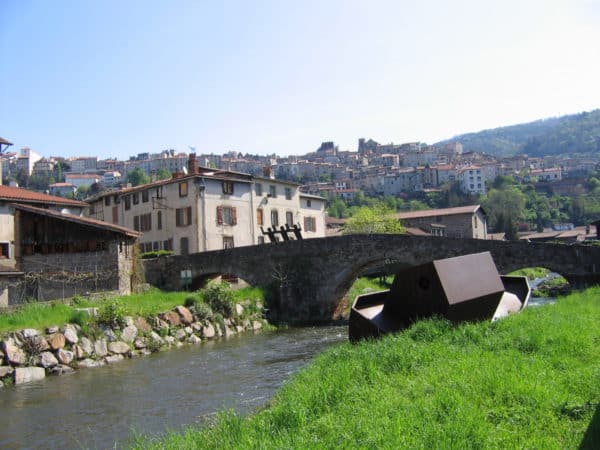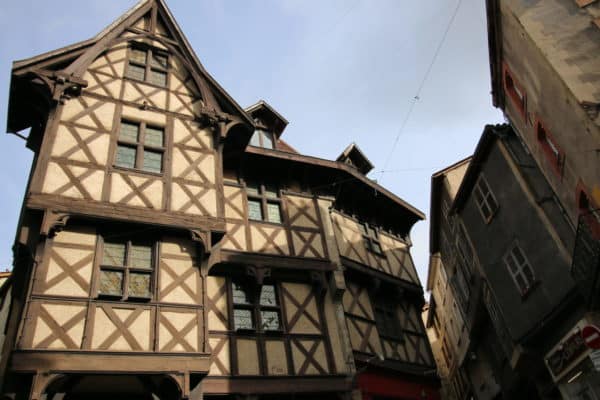Explore Thiers, a town steeped in the history of French cutlery. Discover how the Durolle River played a key role in the industrial and artisanal development of the region since the Middle Ages. Over the centuries, Thiers has evolved to become the French knife capital, thanks to manufacturing methods passed down from generation to generation and adapted to modern needs.
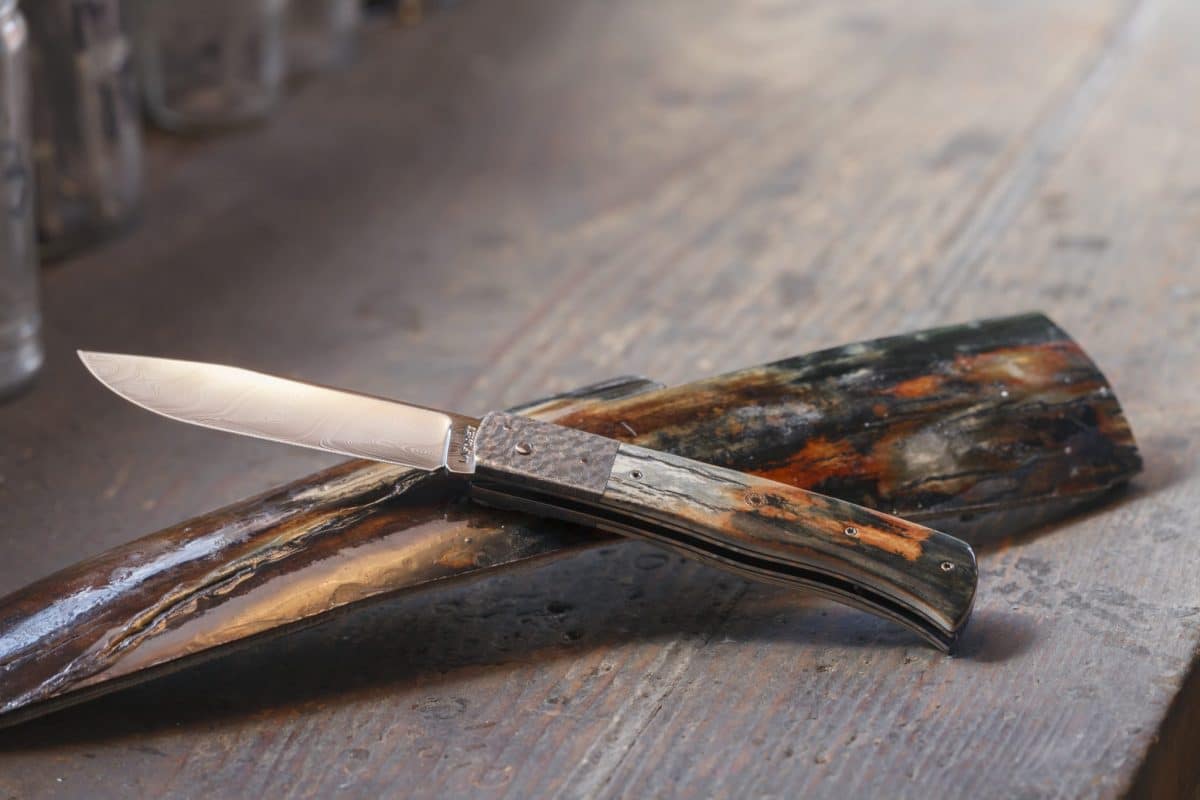
Find out how Thiers became the knife capital
The destiny of Thiers as the capital of the knife was not written in advance. It is the presence of the Durolle river and its steep drop in altitude which allowed the development of certain sectors of activity in the Middle Ages. It could turn flour mills, tanners' fullers, papermakers' mallets, and... the tools necessary for cutlery.
In the 15th century, a quarter of Thiers workers were already cutlers, and Thiers products were exported to several countries. However, it was only at the end of the 16th century, with the creation of the jurande, a statute regulating the profession, that Thiers established itself as a renowned cutlery town.
The cutlery workshops, initially located below the old town, in what is today the factory valley, gradually extended along the river, up to the wild gorges upstream of Thiers, known as of the valley of the spinning wheels. With the advent of electricity and the mechanization of certain tasks, the traditional production system has been modernized. These workshops contributed to the growth of Thiers, the knife capital, and to its worldwide reputation.
At that time, there were other cutlery production areas in France but Thiers stood out thanks to the division of work. In fact, each stage of the manufacturing of the knife was “subcontracted” to a specialized worker, which allowed savings in time and productivity compared to other competitors.
In the Middle Ages, the cutlers of Thiers used materials from the best French farms: the wood used for the handles came from the Bois Noirs located in the Thiers mountains. Iron and steel, for their part, are imported from Nivernais, Burgundy and Dauphiné while the millstones are brought from the quarries of Langeac in Haute-Loire.
Did you know ? The stages of making a Thiers knife
Creating a Thiers knife is an art that is passed down from generation to generation, testifying to the heritage and expertise of this city. However, few people truly know the painstaking steps and know-how involved in making it. Here is an overview accessible to all.
The first step is hot forging. A piece of steel, chosen for its superior quality, is heated and then shaped under a power hammer. This step forms the blade, the bolster (metal part between the blade and the handle), and the tang (rod that fixes the handle). The blacksmith adjusts his technique depending on the type of knife and specific requirements.
After forging, the blade blank is precisely cut. It is a delicate process that separates the blade from the unnecessary part and prepares the blade for the next steps. This step is followed by several treatments: pre-grinding to reduce the thickness of the blade, quenching to harden the steel, and straightening to ensure that each blade is perfectly straight.
Grinding is the next step, where the blade is finely sharpened. This step is crucial because it determines the quality of the knife's edge. After grinding, the blade undergoes a tempering treatment to give it flexibility, followed by careful polishing to achieve a shiny and uniform appearance.
Assembling the handle is another important step. The handle, carefully chosen for its quality and beauty, is fitted and attached to the tang. After this, the knife is polished one last time to give it its final shine.
Finally, the sharpening step is carried out to guarantee optimal sharpness. After rigorous inspection, the knife is ready for packaging.
Each Thiers knife is the result of a complex process, combining tradition and precision, to result in an instrument that is as practical as it is elegant. The meticulousness of this process illustrates why Thiers is recognized as the knife capital. It is this combination of traditional know-how and modern techniques that makes Thiers knives so appreciated and unique.
Discover Thiers and its cutlery museum
Today, Thiers remains a vital center for the cutlery industry and craftsmanship, representing around 80% of French production of cutting instruments and employing nearly 2000 people. Between grinders, blacksmiths, polishers, woodworking and steel manufacturers: they all have very particular and very vibrant know-how.
The Cutlery Museum in Thiers, capital of knives, is a must to understand the importance of this industry in the region. You don't need to be an expert to have a pleasant visit to the knife capital.
At the Cutlery Museum, in Thiers, six centuries of heritage with global influence are to be contemplated. The rich collection presents works from French and foreign cutlery centers, from the 16th century to the present day. An invitation to discover the evolution of the knife object, the elegance of tableware, the modernization of lines and manufacturing techniques. But also a unique opportunity to marvel at pieces of fine cutlery, all in mother-of-pearl, ivory and gold.
In the museum's workshops, the knife makers who are ambassadors of the know-how present you with the emblematic stages of making a knife. Before your eyes, they produce the high-end knives or art knives sold in the museum shop.
Immerse yourself in the knife-making past of the town of Thiers
Visit Thiers, capital of the knife, it is also wandering the streets entering the cutlery shops. The artisans talk to you about their know-how with stars in their eyes. Their job is their life, their identity. Take the time to question them and you will understand. Knifemakers use wood, carbon, bone, fossils, horn and metal to make very personalized knives. Each creation is unique. There is bound to be a model that will be your favorite.
Continue your discovery by taking a guided tour of the last spinning wheel in operation in the Rouets valley and try the two hiking trails that run alongside it.
The walking paths along the Durolle take you to the old mills. In these workshops, called spinning wheels, the grinders shaped the blades of knives using sandstone wheels. In the last working spinning wheel “at Lyonnet”, come see the wheel turn, hear the belts click and discover the working conditions of the grinders.
Guided tour of the last spinning wheel in operation and route on two footpaths.
In May, stroll the paths of Coutellia, the largest cutlery festival in the world. It brings together exhibitors from all over the world in the knife capital, all driven by a passion for cutlery: cutlers, barbers, collectors, equipment suppliers. Discover your favorite among these true objects of art, part tool, part jewelry.
Did you know ? The registered trademark “LE THIERS”
Do you know " LE THIERS®“, this knife which bears the name of his hometown, Thiers, recognized as the capital of French cutlery? It is not just a knife, it is a registered trademark, the result of a collective effort and the know-how of an entire profession. Created by the founding Companions of the Brotherhood of the LE THIERS® Knife, each knife is a work of art reflecting high standards of quality, traceability, territoriality and professional morality.
But how can you recognize a real THIERS®? Here are some tips to avoid being fooled.
First, its overall shape is distinctive. Secondly, it features a specific logo: the “T” logo, engraved on the knife, a symbol of its authenticity. Finally, on the blade, you will find the Community word mark “LE THIERS®”, accompanied by the name of the manufacturer. These characteristics are protected by French and European laws, thus ensuring its uniqueness and excellence.
But “LE THIERS®” is not just a pocket knife. It comes in a variety of designs to suit all needs. And for meals, whether daily or festive, a wide range of THIERS® is available to elegantly embellish your table. In the kitchen, from the slicer to the bread knife, each necessary tool is part of the THIERS® family.
Each THIERS® is therefore much more than a simple knife; it is an ambassador of artisanal excellence and French heritage, a testimony to the cutlery culture of Thiers.
The essential activities of Thiers, capital of knives
Make your own knife. As a couple, with family or friends, visit one of the cutlers who offer this unique workshop. In fact, you can assemble, assemble, polish and even engrave your first name on the blade. You will leave with a “LE THIERS” knife, a unique souvenir “100% made in Auvergne”
Put on your trail shoes to take part in the unmissable 13 km Thiernois. An urban trail starting from Creux de l'enfer to discover the riches of the city of Thiers in a sporting way. This event takes place every year in June!
If you pass through Thiers, you cannot miss the Center for Contemporary Art of National Interest The Hollow of Hell. For more than 30 years, the art center has been honoring the best of national and international contemporary artistic creation and inviting artists to produce works in immersion, collaborating with local actors.


